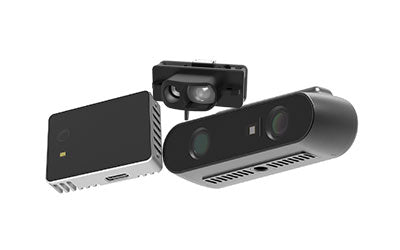Avantages clés des capteurs TOF pour améliorer les expériences VR et AR

Les capteurs TOF (Time of Flight) sont devenus de plus en plus populaires ces dernières années, en particulier dans les domaines de la réalité virtuelle (VR) et de la réalité augmentée (AR). Ces capteurs offrent des capacités de détection de la profondeur et de cartographie précises, essentielles pour créer des expériences immersives en VR et AR. Dans cet article, nous explorerons les avantages de l'utilisation des capteurs TOF dans les applications VR et AR.

Détection précise de la profondeur
L'un des principaux avantages de l'utilisation des capteurs TOF en VR et AR est leur capacité à fournir une détection précise de la profondeur. Les capteurs TOF émettent de la lumière et mesurent le temps qu'il faut à la lumière pour revenir, ce qui leur permet de calculer la distance à un objet. Ces informations peuvent être utilisées pour créer des cartes de profondeur détaillées d'une scène, qui pourront ensuite servir à créer des modèles 3D réalistes.

Ce niveau de précision est essentiel pour créer des expériences immersives en VR et AR. Grâce à une détection précise de la profondeur, les objets virtuels peuvent être placés dans le monde réel de manière à ce qu'ils paraissent et se sentent naturels. Les utilisateurs peuvent interagir avec ces objets virtuels d'une manière qui imite la physique du monde réel, ce qui renforce le sentiment global d'immersion.
Suivi en temps réel
Les capteurs TOF offrent également des capacités de suivi en temps réel, essentielles pour créer des expériences interactives en VR et AR. Grâce au suivi en temps réel, la position et l'orientation de la tête de l'utilisateur peuvent être suivies instantanément, permettant aux objets virtuels d'être rendus avec précision et avec une latence minimale.

Ce niveau de précision du suivi est essentiel pour créer des expériences VR et AR réalistes. Sans suivi en temps réel, les objets virtuels peuvent sembler déconnectés du monde réel, ce qui peut rompre le sentiment d'immersion. Avec le suivi en temps réel, les utilisateurs peuvent se déplacer et interagir avec les objets virtuels d'une manière qui paraît naturelle.
Réduction de la latence
La latence est un problème majeur en VR et AR, car même un petit retard entre les mouvements de l'utilisateur et le rendu des objets virtuels peut briser l'immersion. Les capteurs TOF peuvent aider à réduire la latence en fournissant des capacités de suivi en temps réel et de détection de profondeur.

Avec une détection de profondeur précise et un suivi en temps réel, les objets virtuels peuvent être rendus plus rapidement et avec une plus grande précision, réduisant ainsi la latence et améliorant l'expérience globale en VR ou AR.
Consommation d'énergie réduite
Les capteurs TOF sont également connus pour leur faible consommation d'énergie par rapport à d'autres technologies de détection de profondeur. Cela les rend idéaux pour une utilisation dans des dispositifs VR et AR portables, tels que les casques à écran (HMD).

En utilisant des capteurs TOF, les développeurs peuvent créer des dispositifs VR et AR portables à la fois puissants et écoénergétiques. Cela permet aux utilisateurs de vivre des expériences immersives en VR et AR sans avoir besoin de matériel encombrant et coûteux.
Conclusion
Les capteurs TOF sont devenus un composant essentiel dans le développement des applications VR et AR. Leur détection de profondeur précise, leur suivi en temps réel, leur latence réduite et leur faible consommation d'énergie les rendent idéaux pour créer des expériences VR et AR immersives et réalistes.
À mesure que la technologie des capteurs TOF continue de s'améliorer, nous pouvons nous attendre à voir des applications VR et AR encore plus avancées dans le futur. Grâce à leur capacité à fournir une détection de profondeur et des capacités de suivi précises, les capteurs TOF joueront sans aucun doute un rôle clé dans le développement de ces technologies dans les années à venir.
Synexens 3D Of RGBD ToF Depth Sensor_CS30

-
Publié dans
CS30


